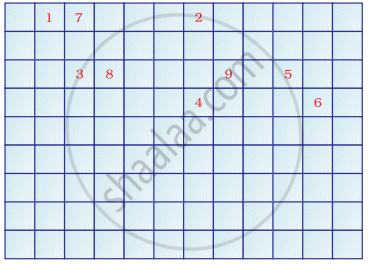Advertisements
Advertisements
प्रश्न
An element Y is in second period and group 16 of the periodic table:
(i) Is it a metal or non-metal?
(ii) What is the number of valence electrons in its atom?
(iii) What is its valency?
(iv) What is the name of the element?
(v) What will be the formula of the compound formed by Y with sodium?
उत्तर
(i) The element Y is a non-metal as all the elements of group 16 are non-metals.
(ii) The number of valence electrons of the element = Group number - 10
= 16-10 = 6.
(iii) Valency of Y = 8- number of valence electrons
= 8 - 6 = 2.
(iv) The name of the element is oxygen as it is the first element in group 16.
(v) Sodium is a group 1 element with a valency of 1. The valency of Y is 2. Therefore, when two atoms of sodium (Na) combine with one atom of Y, the formula of the resulting ionic compound is Na2Y.
APPEARS IN
संबंधित प्रश्न
What was the basis of the earliest attempts made for classification and grouping of elements?
How did the early chemists classify elements?
Example for liquid metal is ______.
Name the neutral atom in the Periodic Table which has the same number of electrons as K+ and Cl-.
Consider the following elements 20Ca, 8Or 18Ar, 16S, 4Be, 2He
Which of the above elements would you expect to be in group 16 of the Periodic Table?
The elements of group 16 are called ______
The element with atomic number 26 will be found in group ______
What type of oxide would Eka– aluminium form?
An element is placed in 2nd Group and 3rd Period of the Periodic Table, burns in presence of oxygen to form a basic oxide.
- Identify the element
- Write the electronic configuration
- Write the balanced equation when it burns in the presence of air
- Write a balanced equation when this oxide is dissolved in water
- Draw the electron dot structure for the formation of this oxide
Complete the following cross word puzzle
Across:
(1) An element with atomic number 12.
(3) Metal used in making cans and member of Group 14.
(4) A lustrous non-metal which has 7 electrons in its outermost shell.
Down:
(2) Highly reactive and soft metal which imparts yellow colour when subjected to flame and is kept in kerosene.
(5) The first element of second Period
(6) An element which is used in making fluorescent bulbs and is second member of Group 18 in the Modern Periodic Table
(7) A radioactive element which is the last member of halogen family.
(8) Metal which is an important constituent of steel and forms rust when exposed to moist air.
(9) The first metalloid in Modern Periodic Table whose fibres are used in making bullet-proof vests

